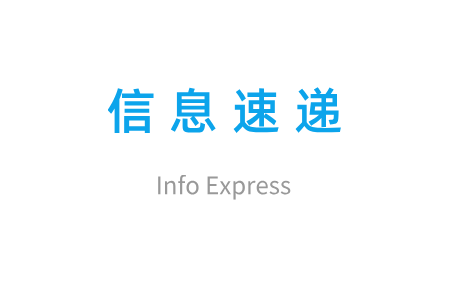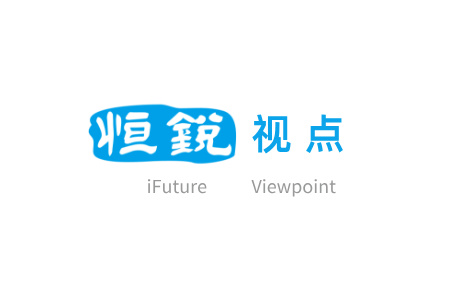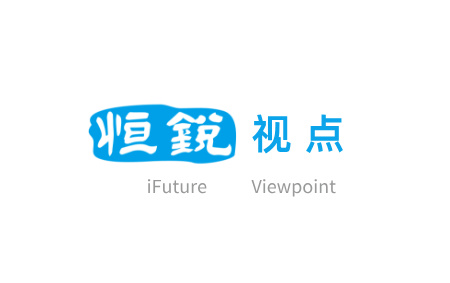Patent Layout: Error Correction and Rights Protection Based on Rules
In the practice of patent agency, issues in patent layout often lead to contradictions in the applications for invention, utility model, and design patents. This results in prior applications becoming conflicting applications that undermine the novelty of subsequent applications, or prior applications being prematurely published or authorized, thereby affecting the inventiveness of subsequent applications. Additionally, design patent drawings may be disclosed by the drawings of invention or utility model patents. Such issues are not uncommon and are often referred to as "own goals" in patent layout. To reduce the occurrence of these "own goals" and to correct them promptly when they do occur, inventors, designers, patent engineers, and patent agents must work closely together. They need to flexibly apply the relevant provisions of the Patent Law, the Implementing Regulations, and the Examination Guidelines to handle individual cases correctly. Below, with examples, we provide a brief introduction on how to reduce the occurrence of "own goals" in patent layout and how to deal with them once they are discovered.
I. Avoiding Mutual Contradictions in the Layout of a Series of Patent Applications
Same-day Filing as an Important Means to Avoid Contradictions in a Series of Patent Applications
For interrelated inventions, utility models, and design patents, such as an invention patent A involving a front bumper and a car with that bumper, a utility model patent B involving a headlight and a car with that headlight, and two design patents C and D involving the bumper and headlight respectively, filing these four patent applications on the same day can avoid contradictions between them.
When multiple interrelated technologies are disclosed, a case-by-case approach can be adopted. For example, a batch of disclosure documents involves the following invention themes: a metal oxide semiconductor device, a finned metal oxide semiconductor device, the packaging of a metal oxide semiconductor device, a method for preparing a metal oxide semiconductor device, the packaging of a fin metal oxide semiconductor, and a method for packaging a fin metal oxide semiconductor. If these six disclosure documents are assigned to six different patent agents for drafting, each agent can only draft based on the technical solution of their respective document. Undoubtedly, the technical solutions of these six disclosure documents may address the same one or two technical problems, means, and effects, or in other words, the invention points. As a result, each of the six patent applications may have a set of claims, and when faced with two comparative documents retrieved by the examiner, the room for amendment is very limited, and the prospects for authorization are not very good. On the contrary, if these six disclosure documents are assigned to one or two agents based on the invention points, it is entirely possible to draft two invention patent applications, each containing three sets of claims with unity of invention, that is, two invention patent applications covering all six invention themes. Depending on the actual progress of substantive examination, that is, based on the specific comparative documents, the agent can amend the claims to overcome the defects pointed out by the examiner in the substantive examination opinion notice. Compared to the situation with six separate patent applications, the prospects for authorization are significantly improved. When all three sets of claims in a single invention patent application can be authorized, within two months after receiving the notice of allowance, it is possible to consider filing a divisional application, that is, retaining one set of claims and splitting the other two sets into separate applications. Ultimately, each set of claims can be authorized as a separate application. In summary, we refer to this approach as "case-by-case - divisional application."
Avoiding Prior Applications Becoming Comparative Documents for Subsequent Applications
When multiple interrelated patent applications cannot be filed on the same day, it is crucial to prevent prior applications from becoming comparative documents for subsequent applications. During the substantive examination of a specific invention patent, examiners often prefer to use a previously published application by the same applicant as a comparative document, which facilitates a patentability comparison using their own "spear" and "shield." For example, the same applicant filed two invention patent applications on November 16, 2022, and December 22, 2022, respectively, titled "A Method for Preparing a Drug-Loaded Polyurethane Hemostatic Sponge" and "A Method for Preparing a Composite Sponge." Since the former requested early publication, its publication date was December 20, 2022. Both patent applications focus on the preparation method of polyurethane sponge, and such a conflicting patent layout naturally increases the difficulty of passing the patent examination.
Similarly, if these two cases had adopted the case-by-case - divisional application approach mentioned earlier, the problem of the prior application becoming a comparative document for the subsequent application could have been completely avoided. Moreover, the chances of passing the substantive examination through case-by-case drafting would be higher. The current situation of these two cases is that the prior application has been rejected, and the subsequent application is still under examination. Even if it can be authorized, the difficulty is considerable.
The fundamental method to avoid the prior application becoming a comparative document for the subsequent application is to flexibly apply Article 34. Article 34: After receiving an invention patent application, the patent administration department of the State Council, upon preliminary examination and finding it in compliance with the requirements of this Law, shall publish it after eighteen months from the application date. The patent administration department of the State Council may publish the application earlier upon the request of the applicant. For two interrelated invention patent applications, if the prior application does not request early publication, it will definitely be published after eighteen months. If the subsequent application is filed within eighteen months after the application date of the prior application, the prior application will not become a comparative document for the subsequent application. To accelerate examination and authorization, there is no problem with the subsequent application requesting early publication and priority examination.
Since the application dates of these two cases are only 40 days apart, after discovering that the prior application had already been published when the subsequent application was filed, another relatively good solution is for the subsequent application to claim priority from the prior application. This will be described in detail later.
II. Flexible Use of Priority and Divisional Applications to Handle Interrelated Prior and Subsequent Applications
Legal Provisions:
A29.2: Within twelve months from the date of the first filing of an invention or utility model patent application in China, or within six months from the date of the first filing of a design patent application in China, if the applicant files another patent application with the patent administration department of the State Council on the same subject matter, the applicant may claim priority.
R35.2: If an applicant for an invention or utility model patent claims domestic priority, and the prior application is an invention patent application, the applicant may file an invention or utility model patent application on the same subject matter; if the prior application is a utility model patent application, the applicant may file a utility model or invention patent application on the same subject matter.
If a patent agent discovers that an applicant has interrelated prior patent applications while working on a case, and the prior application could become a comparative document for the subsequent application, thereby affecting the inventiveness of the subsequent application, the agent should verify whether the filing date of the prior application is within the twelve-month period. If it is within the twelve months, then according to A29.2 and R35.2, claiming priority from the prior application and perfecting and submitting the subsequent application is a good choice.
For example, if the technical solution of the prior patent application is A and the technical solution of the subsequent application is B, the perfected and submitted text may include the technical solution A+B. Solution A has priority, while solution B does not. Therefore, the final submitted technical solution A+B enjoys partial priority. However, in any case, at least the prior application will not become a comparative document for the subsequent application, that is, it will not destroy its inventiveness.
Through the above handling of partial priority, the authorization of the technical solution A+B becomes much easier. During the substantive examination process, the technical solution A+B has to withstand the test of comparative document 1 or comparative document 1+2. At this time, the patent agent has sufficient room for amendment and grounds for argument. The technical solutions A and B can each form a system, that is, retaining a set of claims for technical solution A and a set of claims for technical solution B. Alternatively, they can be completely combined into technical solution A+B to counter comparative document 1 and comparative document 2, increasing the probability of authorization. After such handling, the case is equivalent to a case-by-case application of the prior and subsequent applications.
To maximize the applicant's interests, the combined invention patent application can consider divisional applications during the registration process according to the actual needs of the applicant. The following is a specific description.
An invention patent application with partial priority can be divided into cases during registration.
Since solutions A and B are relatively independent of each other, according to the actual needs of the applicant, solution A or B can be divided into cases within two months after receiving the notice of registration, thereby ultimately obtaining the patent rights of the original two invention patents. The specific example mentioned earlier can be considered for handling by first claiming priority and combining cases, and then dividing cases.
III. Using A23.3 to Counter Infringement of Subsequent Design Patent Applications Using Partial Drawings from Prior Invention or Utility Model Patent Applications
A23.3: A granted design patent shall not conflict with any lawful rights obtained by others before the application date.
R35.3: If a design patent applicant claims domestic priority, and the prior application is an invention or utility model patent application, the applicant may file a design patent application on the same subject matter shown in the drawings; if the prior application is a design patent application, the applicant may file a design patent application on the same subject matter.
R35.3: If the applicant claims domestic priority, the prior application shall be deemed withdrawn from the date of the subsequent application, except when the design patent applicant claims priority based on an invention or utility model patent application.
A23.1: A granted design patent shall not belong to existing designs; nor shall any entity or individual have filed an application for the same design with the patent administration department of the State Council before the application date, which is recorded in the patent documents published after the application date.
R69.2: The reasons for requesting the invalidation of a patent, as referred to in the preceding paragraph, mean that the granted invention or creation does not comply with the provisions of Article 2 (definition) of the Patent Law, Article 19, Paragraph 1 (pre-examination for foreign applications), Article 22 (three requirements for the authorization of inventions and utility models), Article 23 (authorization requirements for designs), Article 26, Paragraph 3 (requirements for the description of inventions/utility models), Article 26, Paragraph 4 (requirements for the claims of inventions/utility models), Article 27, Paragraph 2 (requirements for drawings or photographs of designs), Article 33 (amendments not exceeding the scope), or Article 11 (good faith) of the Implementing Regulations, Article 23, Paragraph 2 (the overall technical solution of the independent claim, including necessary features), Article 49, Paragraph 1 (divisional applications not exceeding the scope), or the provisions of Article 5 (non-compliance with laws and regulations), Article 25 (non-protectable subjects), or Article 9 (repeated authorization) of the Patent Law.
R70.3: If a request for the invalidation of a design patent right is based on the ground that it does not comply with Article 23, Paragraph 3 of the Patent Law (conflict with prior rights), but no evidence of rights conflict is submitted, the patent administration department of the State Council shall not accept it.
Therefore, when a subsequent design patent application uses drawings from a prior invention or utility model patent application, two scenarios are discussed: the prior invention or utility model patent application and the subsequent design patent application are filed by the same applicant; and the prior invention or utility model patent application and the subsequent design patent application are filed by different applicants.
1.Prior and Subsequent Applications by the Same Applicant
When the design patent is authorized, the utility model patent has not yet been published and is not a design patent application. Therefore, it is neither a conflicting application nor an existing design. As a result, no one can use the provisions of R69.2 and A23.1 as grounds for invalidation. Moreover, it does not "conflict with any lawful rights obtained by others before the application date," so it cannot be used as grounds for invalidation under A23.3.
Nevertheless, when an applicant submits an invention or utility model patent application and then files a design patent application using the drawings from the invention or utility model patent application, it is necessary, and even very necessary, to claim priority from the prior invention or utility model application to counter any design patent applications submitted by others before the filing date of the current design patent application.
2.Prior and Subsequent Applications by Different Applicants
When the design patent is authorized, the invention or utility model patent has also not yet been published. Similarly, the invention or utility model patent is not a design patent application, so the prior application is neither a conflicting application nor an existing design for the subsequent application.
However, the patentee of the utility model patent may invoke A23.3 to sue the patentee of the design patent or to challenge the validity of the design patent. This is because the patentee of the utility model patent has obtained the copyright to the disclosure materials of the patent application on the utility model application date, and it is best to have a copyright registration to submit as evidence of rights conflict.
Additionally, as a party with a vested interest in the invention or utility model patent, if a lawsuit is to be filed, the cooperation of the patentee of the invention or utility model patent is required to provide the relevant disclosure materials of the utility model patent.
Let's take a closer look at the Examination Guidelines regarding the examination provisions under Article 23, Paragraph 3 of the Patent Law:
A design patent right shall be declared invalid if it is found to conflict with lawful rights obtained by others before the application date (the priority date if priority is claimed). This is a statutory provision and an important ground for invalidation.
"Others" refers to civil subjects other than the patentee, including natural persons, legal persons, or other organizations.
"Lawful rights" refer to rights or interests that are enjoyed in accordance with the laws of the People's Republic of China and are still valid on the application date of the involved patent. These include trademark rights, copyright, business name rights (including trade name rights), portrait rights, and the right to use the distinctive packaging or decoration of well-known goods.
"Obtained before the application date" (hereinafter referred to as "priorly obtained") means that the acquisition date of the prior lawful right is before the application date of the involved patent.
"Conflict" means that without the permission of the rights holder, the design patent uses the subject matter of the prior lawful right, thereby causing the implementation of the patent right to infringe upon the relevant lawful rights or interests of the prior rights holder.
In the invalidation declaration procedure, the requester shall provide evidence for their claims, including proving that they are the rights holder or a party with a vested interest in the prior right and that the prior right is valid.
Specifically, according to the provisions on the acquisition of copyright and copyright registration, copyright is automatically obtained upon the completion of the work, and copyright registration only serves as prima facie evidence, not a statutory condition for the creation of copyright. Since the applicant of the prior patent had completed the creation of the patent application text on the application date, that is, they had obtained the copyright to the text, any subsequent design patent application that uses the drawings from the prior patent application would be suspected of infringing the lawful rights already obtained by the prior applicant (who must be another person) to the drawings, that is, the copyright to the patent text automatically obtained upon the completion of the patent disclosure text.
If the subsequent design patent application is filed when the prior invention has already been published after passing the preliminary examination, or the utility model has already been authorized and announced, the prior text (regardless of whether it is the same applicant!) will constitute an existing design for the design patent.




